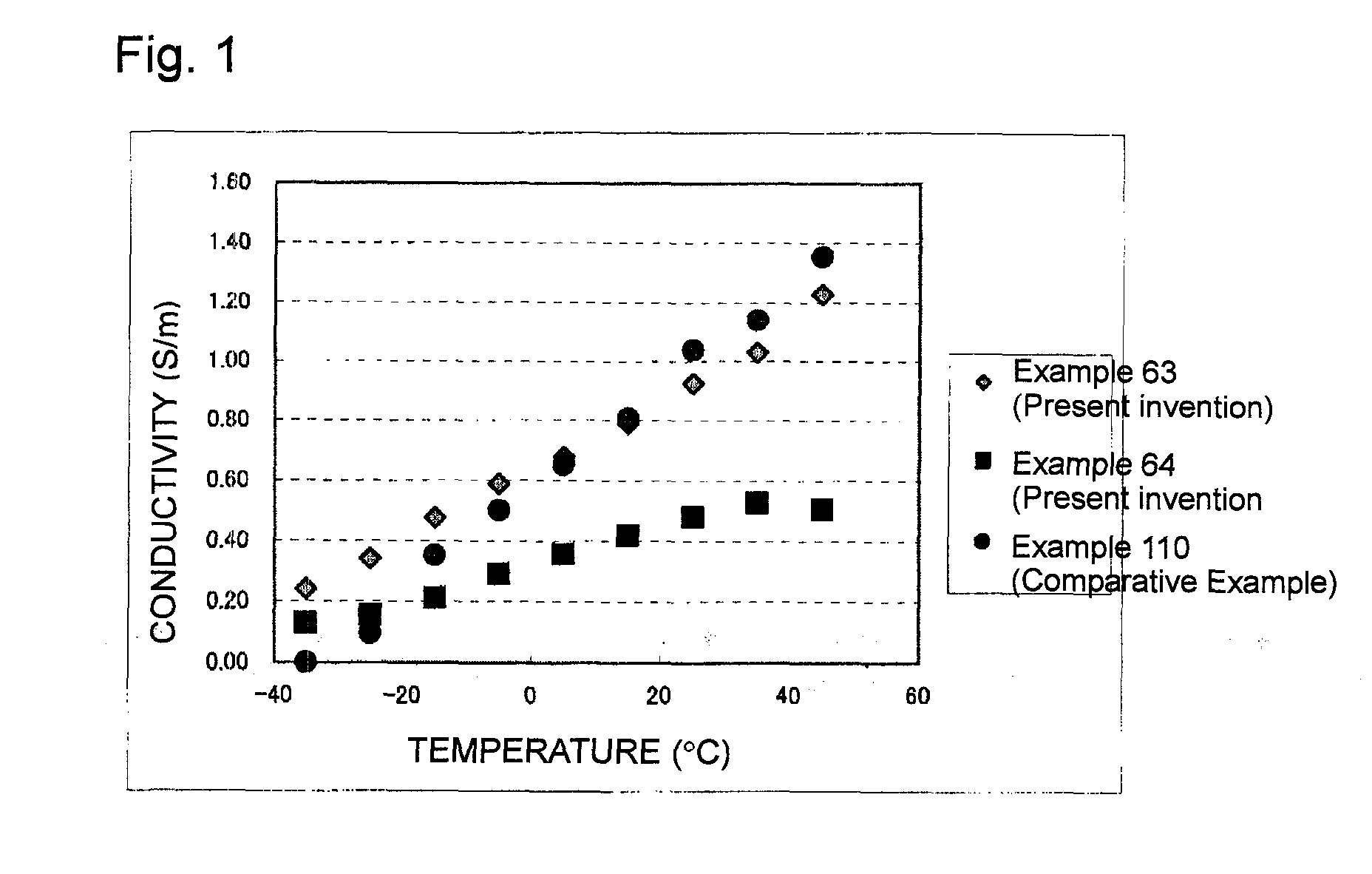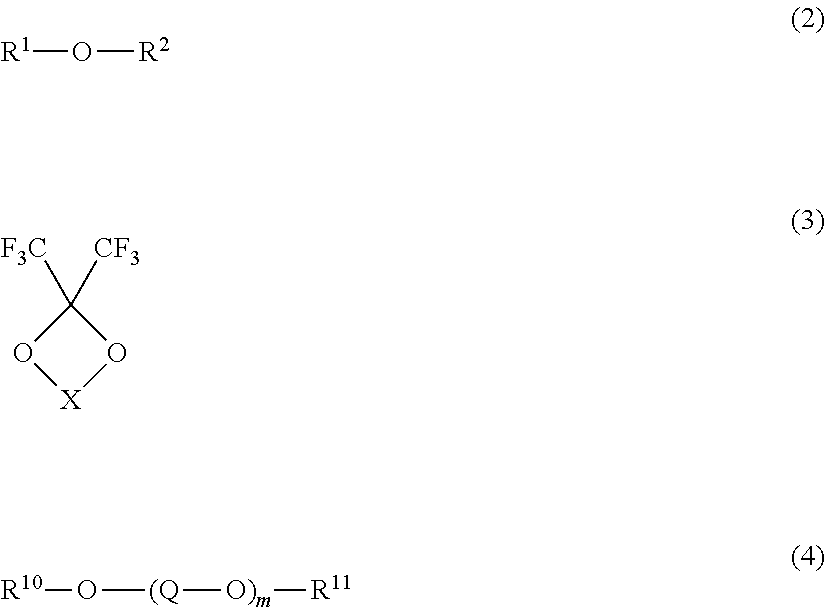Nonaqueous electrolyte for secondary cell, and secondary cell
a secondary cell and electrolyte technology, applied in the field of nonaqueous electrolyte for a secondary cell and a secondary cell, can solve the problems of hydrofluoroether volatilization and loss of choking effect, low flash point, serious problems, etc., and achieve excellent low temperature characteristics, long-term non-flammability, and reduce the erosion of aluminum current collectors
- Summary
- Abstract
- Description
- Claims
- Application Information
AI Technical Summary
Benefits of technology
Problems solved by technology
Method used
Image
Examples
example 1
[0143]Tetraglyme (1.30 g, 5.9 mmol) as a compound (4) (glyme type solvent) and the compound (1-2) (hereinafter referred to as CTFSI-Li) (1.46 g, 5.9 mmol) as a lithium salt were mixed in equal molar amounts, and then HFE347pc-f (CF3CH2OCF2CF2H, 2.99 g, 2.0 ml) as a hydrofluoroether was added and mixed to obtain a nonaqueous electrolyte.
examples 2 to 8
[0144]Nonaqueous electrolytes were obtained in the same manner as in Example 1 except that the composition of the lithium salt, the compound (4) and the hydrofluoroether was changed as shown in Table 1. However, in Example 8, in addition to the composition shown in Table 1, ethylene carbonate was added in an amount of 2.64 g.
examples 101 to 103
[0145]Nonaqueous electrolytes were obtained in the same manner as in Example 1 except that CTFSI-Li was used as a lithium salt, and without using the hydrofluoroether of the present invention, other solvents were used as shown in Table 1.
PUM
| Property | Measurement | Unit |
|---|---|---|
| conductivity | aaaaa | aaaaa |
| melting point | aaaaa | aaaaa |
| charging voltage | aaaaa | aaaaa |
Abstract
Description
Claims
Application Information
 Login to View More
Login to View More - R&D
- Intellectual Property
- Life Sciences
- Materials
- Tech Scout
- Unparalleled Data Quality
- Higher Quality Content
- 60% Fewer Hallucinations
Browse by: Latest US Patents, China's latest patents, Technical Efficacy Thesaurus, Application Domain, Technology Topic, Popular Technical Reports.
© 2025 PatSnap. All rights reserved.Legal|Privacy policy|Modern Slavery Act Transparency Statement|Sitemap|About US| Contact US: help@patsnap.com



